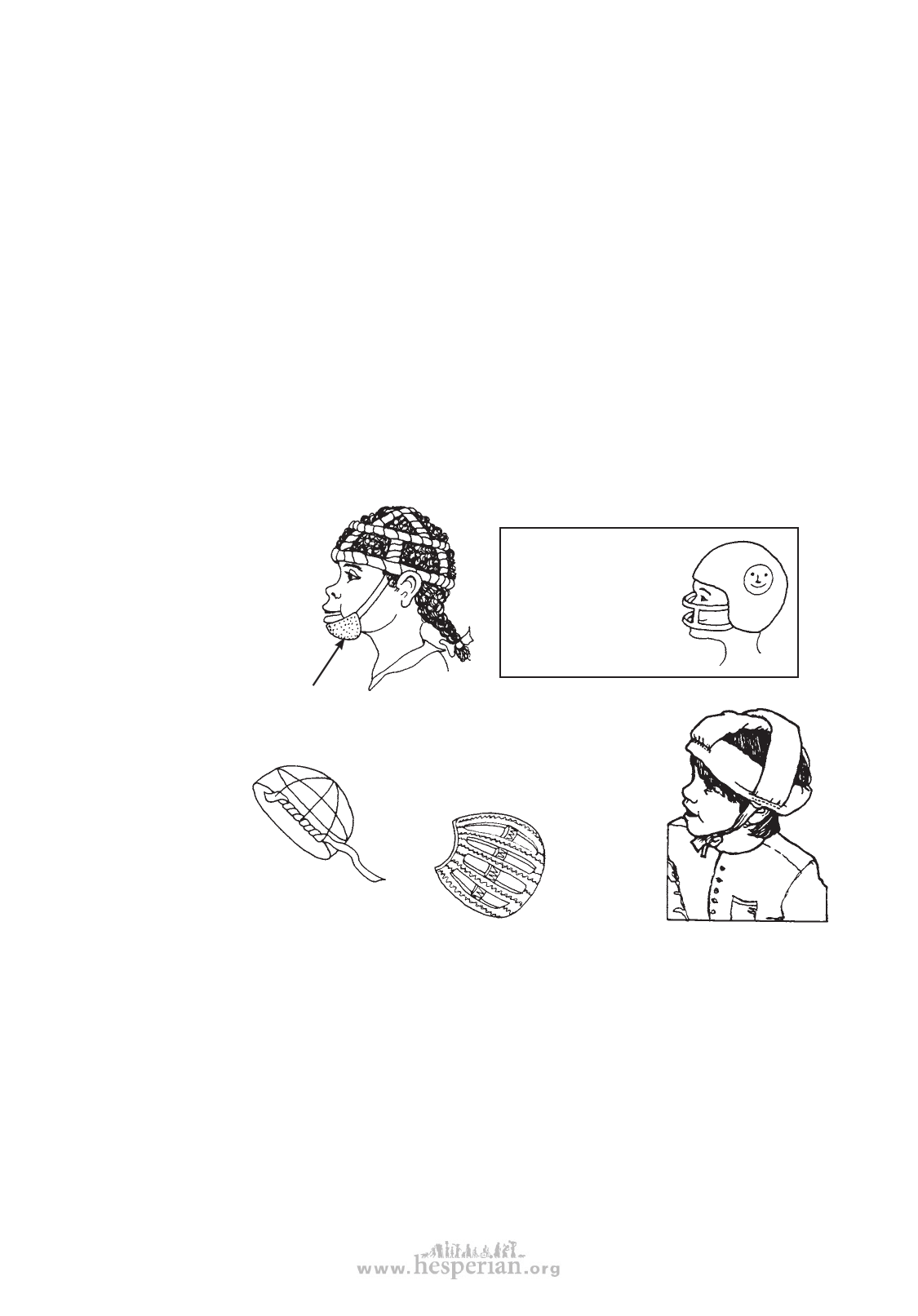
SEIZURES
WHAT TO DO WHEN A CHILD HAS A SEIZURE
• Learn to recognize any ‘warning signs’ that a seizure is about to begin, such as
sudden fear or a cry. Quickly protect the child by lying her down on a soft mat or
other place where she cannot hurt herself.
• When a ‘big’ seizure starts, do not try to move the child unless she is in a
dangerous place.
• Protect the child as best you can against injury, but do not try to forcefully
control her movements. Remove any sharp or hard objects near her.
• Put nothing in the child’s mouth while she is having a seizure—no food,
drink, medicine, nor any object to prevent biting the tongue.
• Between spasms, gently turn the child’s head to one side, so that spit drains out of
her mouth and she does not breathe it into her lungs.
• After the seizure is over, the child may be very sleepy and confused. Let her sleep.
For headache, which is common after a seizure, give acetaminophen (paracetamol)
or aspirin.
235
HEAD PROTECTION
To protect the head of
a child who falls hard
when she has a seizure,
it may be wise for her to
wear some kind of head
protection most of the
time.
chin padding
A child who often
injures his face with
seizures may need
a ‘hard hat’ helmet
with a face mask.
You can make
a ‘cage’ of stiff
wire and wrap
it with strips
of inner tube,
soft cloth, or
sponge rubber.
Or cut a piece
of old car tire
something like
this.
Or sew
strips
of cloth
filled
with
padding
MEDICINES TO PREVENT SEIZURES
There are no medicines that ‘cure’ epilepsy. However, there are medicines that
can prevent the seizures of most children—as long as they keep taking the medicine
regularly. As long as a child has epilepsy—which may be for years or all his life—he
must continue to take anti-seizure medicines.
Sometimes preventing seizures for a long time seems to help stop epilepsy
permanently. For this reason, if the child has had many seizures in the past, it is usually
wise for him to keep taking anti-seizure medicines regularly for at least one year after
the last seizure. Only then should you gradually lower and stop the medication to see if
he still needs it.
disabled village children